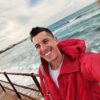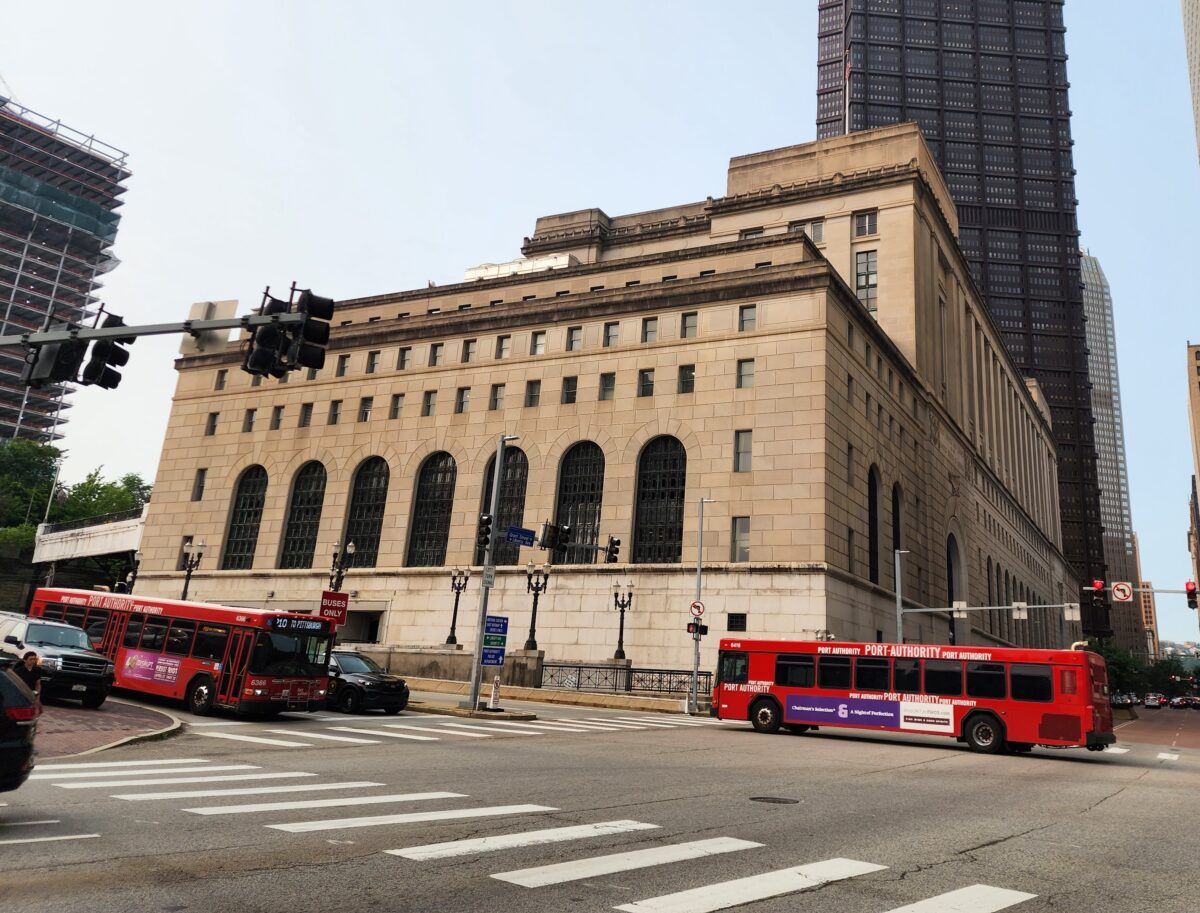During its closing argument, the government implored the jury to convict the defendant on each of the 63 counts he’s charged with and to consider “what Tree of Life was and what it became,” prosecutor Mary Hahn said.
In this country, everyone is permitted to observe their faith in their chosen house of worship, and no one is allowed to enter a sanctuary and prevent others from their prayers. However, on the morning of Oct. 27, 2018, Hahn said, defendant Robert Bowers violated that constitutional right when he stormed the Tree of Life building and attacked three congregations: Dor Hadash, New Light and Tree of Life * Or L’Simcha.
“He stopped their religious services, and he tried to stop them from living by their faith,” she said.
The question of whether the defendant intended to obstruct the free exercise of religion is key in this case, because it’s those charges that carry the possibility of the death penalty. The prosecution wants the jury to find that the defendant killed Jews because of their religion. The defense wants the jury to find that, instead, he was motivated by a misguided perception that Jews were aiding immigrants in a plot to replace white people.
For more than an hour, Hahn recapitulated the horrifying events of 4½ years ago: how the defendant methodically worked his way through the synagogue building, how he fired at least 100 rounds of ammunition, how he reloaded his rifle at least twice, where he located each victim — whether in a chapel or near another worship room — and how he deliberately “hunted Jews.”
These actions weren’t spurred by a “sudden rage or confusion,” she said. “His hatred of Jews runs deep and is longstanding.”
Hahn referred to the defendant’s creation and use of a social media account — on Gab.com — where he posted, reposted and liked virulent white supremacist beliefs.
By the time police officers Dan Mead and Michael Smidga arrived at the Tree of Life building that Saturday morning, the defendant had already killed eight worshippers. Instead of surrendering, though, the defendant kept shooting — first at the responding officers, then at surviving Jewish congregants still inside the building.
When the sirens and police later surrounded the building, the defendant again could have surrendered. Instead, he found a classroom to hide in and continued his rampage. He took chairs that children regularly used during religious school and used them to impede entry. He placed large cardboard boxes on a table to provide cover. He set up the educational space, Hahn said, “to maximize his tactical advantage, then lay and wait, ready to ambush officers.”
Throughout its closing argument, the government stressed the defendant’s “intentionality.”
When a man drives to a synagogue, hunts down worshippers, points a high-powered rifle at them and repeatedly pulls a trigger, he intends to send a message that “you are not safe in your house of worship,” she said.
The defendant relied on his cellphone, posted on social media, and purchased guns and holsters that satisfied the requirements of “interstate commerce” to prove federal crimes, Hahn said. And, “his singular target that day was Jews.”
The defendant’s intentionality, she continued, was further evidenced by his deliberate measures to ensure six separate hard drives on his personal computer would be wiped clean after the shooting.
“It worked,” Hahn said. “The FBI could never recover any information from his hard drives. He knew what he was doing was wrong.”
At so many points — both during Oct. 27 and in the months preceding the attack — the defendant could have changed course, but he did not, the prosecutor said: “That’s textbook premeditation.”
The defendant’s victims were people who had “canes and hearing aids … he pulled the trigger and shot a 97-year-old woman, a grandmother, a bubbie, a mommy.”
He killed 11 worshippers after spending months repeatedly calling online for the “genocide of Jews.”
The jury must return a verdict supported by the “overwhelming evidence in this case,” Hahn said. Hold this defendant accountable for everything he did to the worshippers, for everything he did to the survivors and “hold him accountable for those who could not testify: Joyce Fienberg, Richard Gottfried, Rose Mallinger, Jerry Rabinowitz, Cecil Rosenthal, David Rosenthal, Bernice Simon, Sylvan Simon, Daniel Stein, Melvin Wax and Irving Younger.”
In the afternoon, the defense presented its closing arguments.
Attorney Elisa Long acknowledged to jurors that after three weeks of not only observing images and videos but also hearing testimony of those present in the Tree of Life building on Oct. 27, it’s clear this “senseless act” was caused by Bowers.
Instead of offering an “excuse or justification” for his actions, however, the defense asked jurors to honor their legal duties and carefully apply the law as Judge Robert Colville instructed earlier that day.
According to the defense, Colville described the free exercise of religion as freedom to observe religious principles.
“This definition doesn’t include good works or conduct,” Long said.
In the weeks preceding Oct. 27, the defendant made a connection between Jews and immigrants and became “almost singularly focused on HIAS.”
HIAS (formerly the Hebrew Immigrant Aid Society) is one of nine U.S. resettlement agencies and the only one that is specifically driven by Jewish values.
Long quoted several posts the defendant made, including one claiming HIAS likes to “bring in hostile invaders,” another that Jews want “illegals” in the United States, and one post claiming that “HIAS is a huge enabler of refugee invasions.”
The posts, Long said, “reveal his state of mind.”
She said that more insight into the defendant’s beliefs could be gleaned from things he said after he surrendered. Long recited testimony from officers who heard the defendant say, “I have to take action, they are killing our kids”; “These people are committing genocide on my people”; “Jews are killing our children”; “All Jews must die”; and “Jews are the children of Satan.”
“None of this makes any sense, and none of it is true, but it is what [the defendant] believed to be true — so much so that he took the dramatic action that he did,” Long said.
The defendant wasn’t at the Tree of Life building to obstruct religious study or religious services, she said. Instead — and in opposition to what the government claimed — he was there because of Congregation Dor Hadash’s support of HIAS and because “he wanted to stop that group’s support of HIAS,” Long said. The defendant was motivated by “the irrational thought” that his actions that morning would save children’s lives, prevent genocide and stop immigrants.
There is “no making sense of this senseless act,” Long said. Still, she continued, jurors must focus their attention on whether the government has proven a “very specific piece of intent and motive.”
Reaching this determination is a “tall order and not terribly satisfying for you in the wake of all this tragedy and loss, but these are the charges the government has brought, and these are the decisions you as the jury must make.”
“To hear the argument you just heard would be to suggest this was about Dor Hadash only,” U.S. Attorney Eric Olshan said in rebuttal. “That man went into Tree of Life where three different synagogues were worshipping, and he killed people from each of those three congregations.”
The defendant did not isolate Dor Hadash when he entered the building, Olshan said. “He focused on any Jew he could find.”
The defendant hated Jews because in his mind they killed children, were “diseased liars and controlled the government,” Olshan said.
This hatred wasn’t simply spurred by refugee resettlement or immigration. “We are talking about things people have said and believed about Jews for many, many years.”
The question of whether the defendant acted intentionally to obstruct the free exercise of religion can be answered simply by determining where he went that Saturday morning, Olshan said.
“Did he go to a refugee resettlement meeting? No. Did he go to the border to help Jews from resettling people? No. Did he go to HIAS’ office in Maryland? No.”
Instead, the defendant got in his car and drove about 30 minutes from his apartment in Baldwin to Squirrel Hill, “the center of the Jewish universe in the Pittsburgh region.”
He drove to a building, with the words “Tree of Life” written on its facade, on a Saturday morning, at a specific time when the sign outside the front said, “We are having worship services,” Olshan said. “That’s all you need to know to determine intent of what he wanted to do that morning.”
It would be “absurd,” Olshan said, to conclude that the defendant’s actions were strictly related to HIAS.
“When you walk through that door every day you don’t leave your common sense behind,” he told the jury. “It’s one of the only things you’re allowed to bring with you. Use your common sense.”
The defendant’s actions “decimated” the ability of Dor Hadash, New Light and Tree of Life to have a minyan and freely practice their faith, Olshan said. The “natural consequences” of his actions was that those three congregations could not freely exercise their religion with the same people in that space again.
Olshan closed by raising a bag containing the remnants of a tattered yarmulke.
“A yarmulke is worn to remind someone of God’s presence at all times,” he said. “It is a simple meaningful expression of Jewish faith. … This yarmulke, which was torn apart by the defendant’s gunfire, is no longer a reminder of God’s presence but of what the defendant, that man, did to Irving Younger and 10 other people, and what he tried to do to many others.
“No one can put this yarmulke back like it was before,” Olshan continued. “No one has that power, but you do have the power to do justice in this court of law, and the only justice is a verdict of guilty on every single one of the 63 counts in the superseding indictment in this case.”
Following an afternoon break, Colville designated five jurors to serve as alternates and the remaining 12 to be deliberating jurors.
Each group was sent to a separate room with specific instructions of what could be discussed. By the end of the day no verdict was reached.
Related story: Resources are available to ease trauma during synagogue shooting trial.
This story is part of ongoing coverage of the Pittsburgh synagogue shooting trial by the Pittsburgh Jewish Chronicle and the Pittsburgh Union Progress in a collaboration supported by funding from the Pittsburgh Media Partnership.

Adam Reinherz
Adam writes for the Pittsburgh Jewish Chronicle and can be reached at areinherz@pittsburghjewishchronicle.org.


